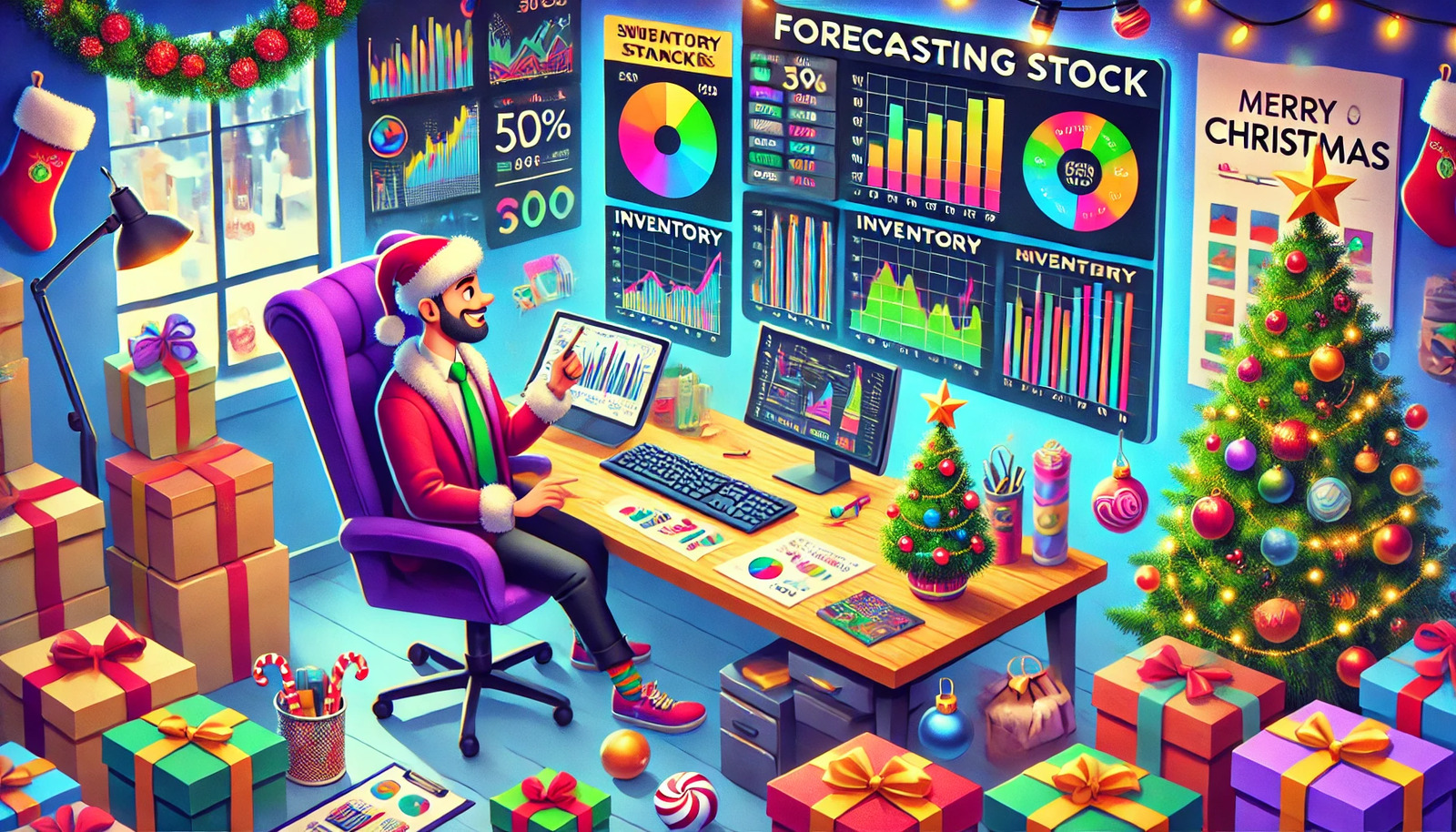
The Christmas period is the pinnacle of the retail calendar. For businesses, it’s not just a festive time—it’s an opportunity to maximize sales and foster customer loyalty. To meet the surging demand during the holiday season, stores rely on meticulous forecasting methods. Here's how they do it:
1. Analyzing Historical Sales Data.
Historical data is the backbone of holiday forecasting. Retailers examine past sales trends from previous Christmas periods to identify which products performed well and which didn’t. By comparing year-over-year data, they can project demand for specific categories such as toys, electronics, and seasonal decorations.
Key Metrics:
- Sales volume during the same period in previous years.
- Peak shopping days (e.g., Black Friday, Cyber Monday).
- Top-selling products and categories.
2. Monitoring Market Trends.
Retailers keep a close eye on emerging market trends to predict what customers will want. For instance, hot new toys, trending gadgets, or a popular color scheme for holiday decorations often dictate purchasing decisions. Social media platforms, online reviews, and influencer promotions are key sources of insight.
Example: If a tech company announces a groundbreaking product in October, stores will anticipate high demand during Christmas.
3. Collaborating with Suppliers.
Supplier relationships are crucial during the holidays. Retailers communicate their forecasts to suppliers months in advance, ensuring adequate stock levels and timely deliveries. Flexibility is often built into these agreements to adapt to unexpected demand changes.
4. Leveraging Technology and AI.
Advanced technology, particularly AI-driven tools, is revolutionizing retail forecasting. These tools analyze vast datasets, including historical sales, market trends, and consumer behavior, to deliver precise demand predictions.
Technological Tools:
- Predictive analytics software.
- Machine learning algorithms that identify patterns in consumer preferences.
- Real-time inventory management systems.

5. Assessing Economic Indicators.
Macroeconomic factors, such as inflation rates, consumer confidence, and disposable income levels, also influence holiday forecasting. A robust economy usually means higher spending, whereas economic uncertainty may result in more conservative purchasing behavior.
6. Monitoring Pre-Holiday Shopping Behavior.
The weeks leading up to Christmas, including Black Friday and Cyber Monday, offer valuable insights. Retailers use these early shopping trends to fine-tune their forecasts and adjust inventory levels as needed.
7. Factoring in Regional and Cultural Preferences.
Different regions and demographics celebrate Christmas in unique ways. Retailers tailor their inventory to reflect these variations. For instance, snow gear may be more popular in colder regions, while tropical locales might see increased demand for outdoor holiday decorations.
Challenges in Holiday Forecasting.
While forecasting has become more sophisticated, it is not without challenges:
- Unpredictable Trends: Viral products or unexpected shifts in consumer behavior can disrupt predictions.
- Supply Chain Disruptions: Delays in shipping can lead to stockouts or overstock.
- Economic Volatility: Changes in consumer spending power can impact forecasts.
Strategies for Success.
To mitigate risks and ensure success, retailers employ several strategies:
- Buffer Stock: Maintaining extra inventory to handle unexpected demand surges.
- Dynamic Pricing: Adjusting prices based on real-time demand to optimize sales.
- Omnichannel Integration: Using both online and offline sales channels to meet consumer needs.
Conclusion.
Accurate forecasting for the Christmas period is both an art and a science. By blending historical data analysis, market trend monitoring, supplier collaboration, and advanced technology, retailers can ensure their shelves are stocked with what customers want most. The ultimate goal? To make every shopper's holiday season merry and bright while maximizing profits.


